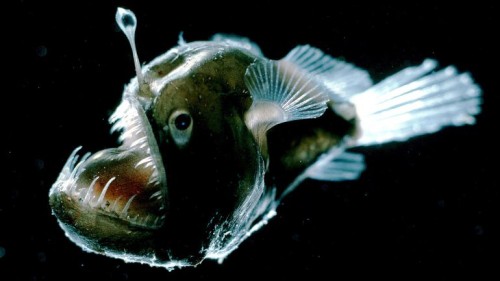Coldest, oldest, fastest : 10 extreme sea creatures – these are amazing, both in looks and facts. Here are my favorite two.

Photo: Edith Widder
Anglerfish inhabit the deep sea, and for a century they baffled marine biologists. At first only female anglerfish were known; where the males were and what they looked like was a complete mystery. Then a parasitologist began studying the worm-like parasites generally attached to anglerfish females. What he found, instead of parasites, were anglerfish males — each undergoing a radical transformation. When a male anglerfish is tiny, he finds and attaches to a female. First his jaws dissolve and his bloodstream fuses with the female’s. Then his brain disappears and his guts shrink. Eventually he is little more than a testis, fertilizing the eggs of one female, for the rest of his life.

CC BY-SA 3.0
Photo: Nick Hobgood
Purple anemone (Heteractis magnifica) and resident anemonefish (Amphiprion ocellaris) (clownfish) in East Timor.
http://en.wikipedia.org/wiki/Ocellaris_clownfish#mediaviewer/File:Anemone_purple_anemonefish.jpg
Clownfish families were made famous in ‘Finding Nemo,’ but real ones have more peculiar lives than the movie lets on. In a sea anemone where the clownfish live, the biggest fish is always a female, laying all the eggs. The next biggest fish is a functional male, fertilizing them. And lots of smaller clownfish are immature males. When the female dies or is eaten by a predator, the biggest male switches sex to become female. At the same time the biggest immature male grows into a functional male that can fertilize the eggs. This conveyor belt system of parenting assures a constant supply of baby Nemos.


